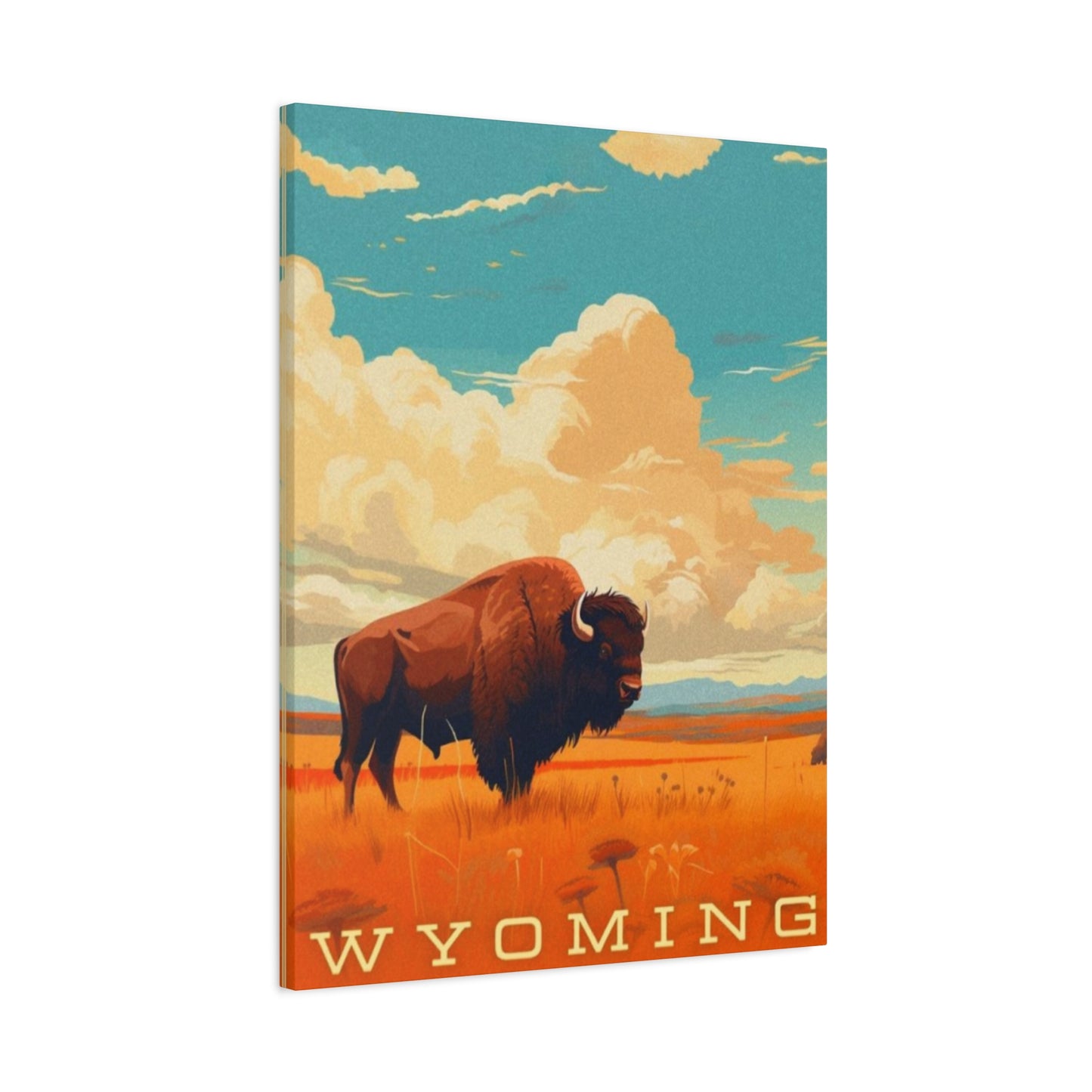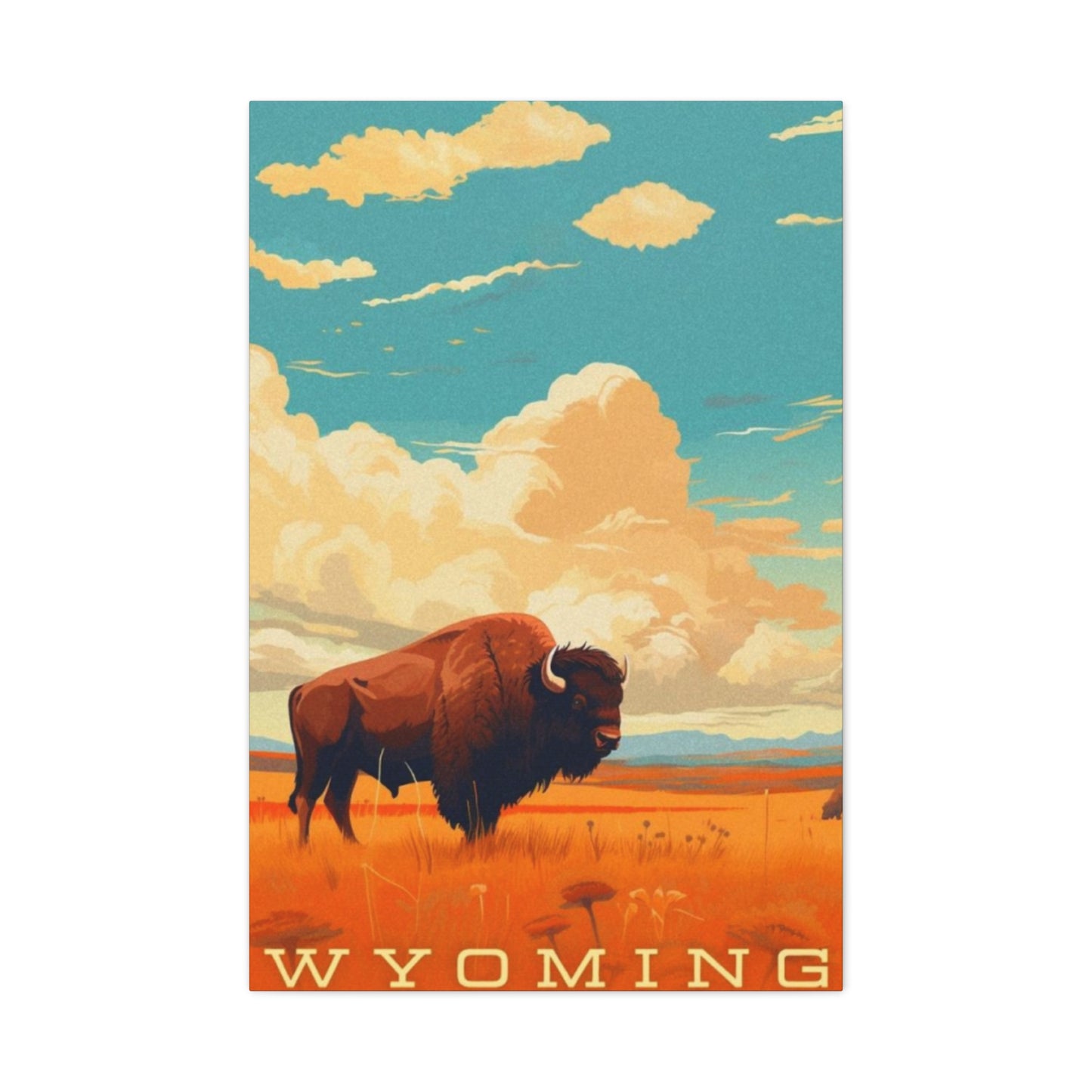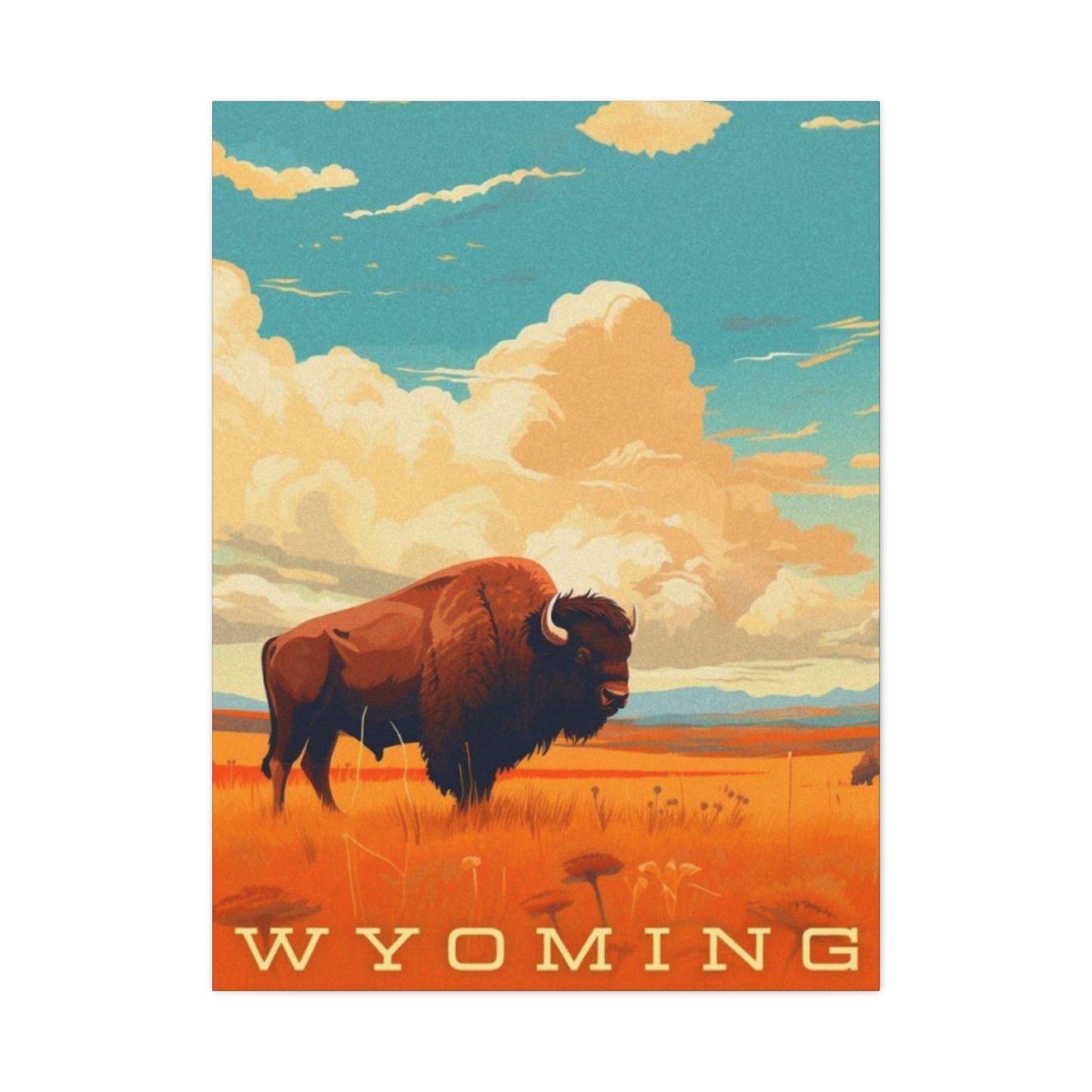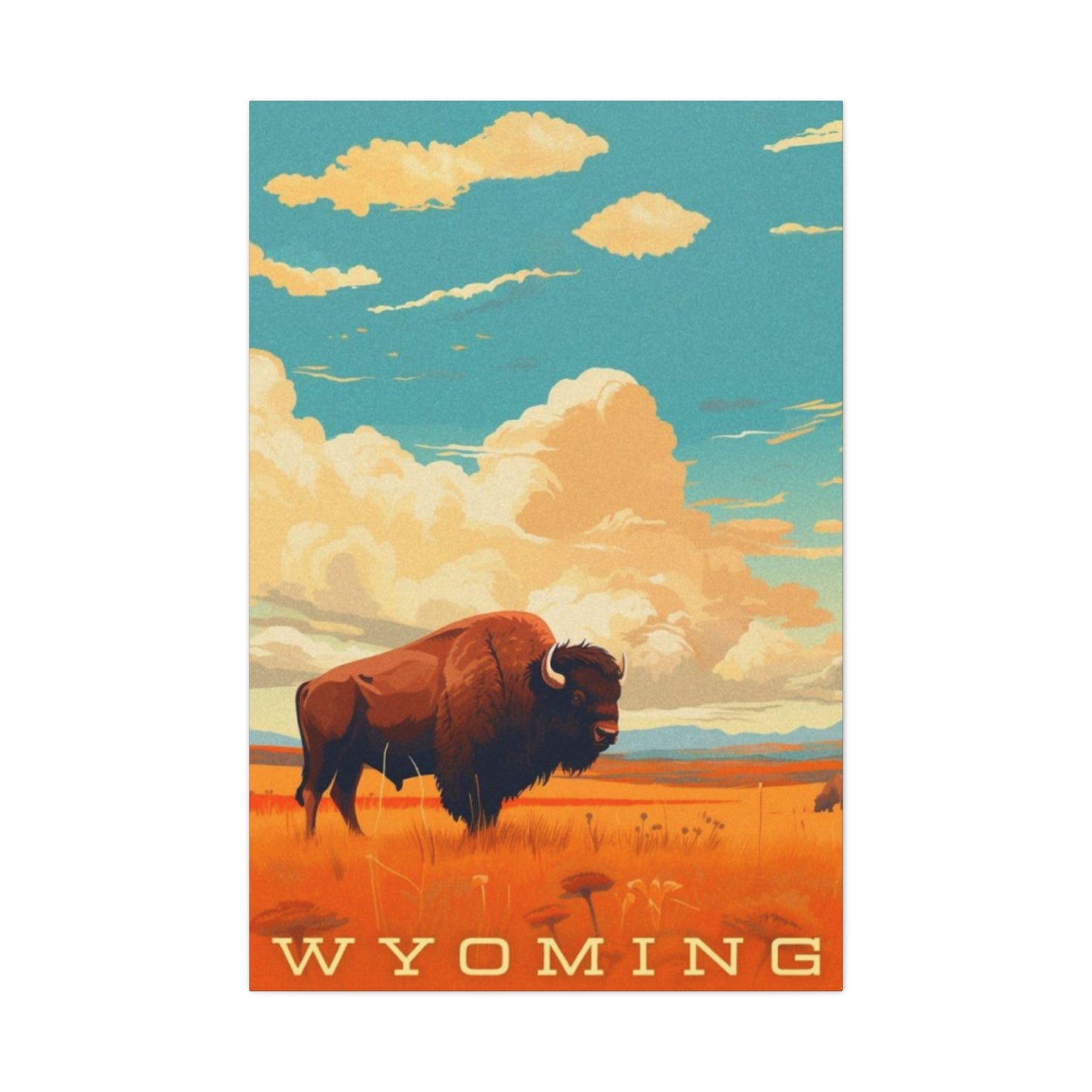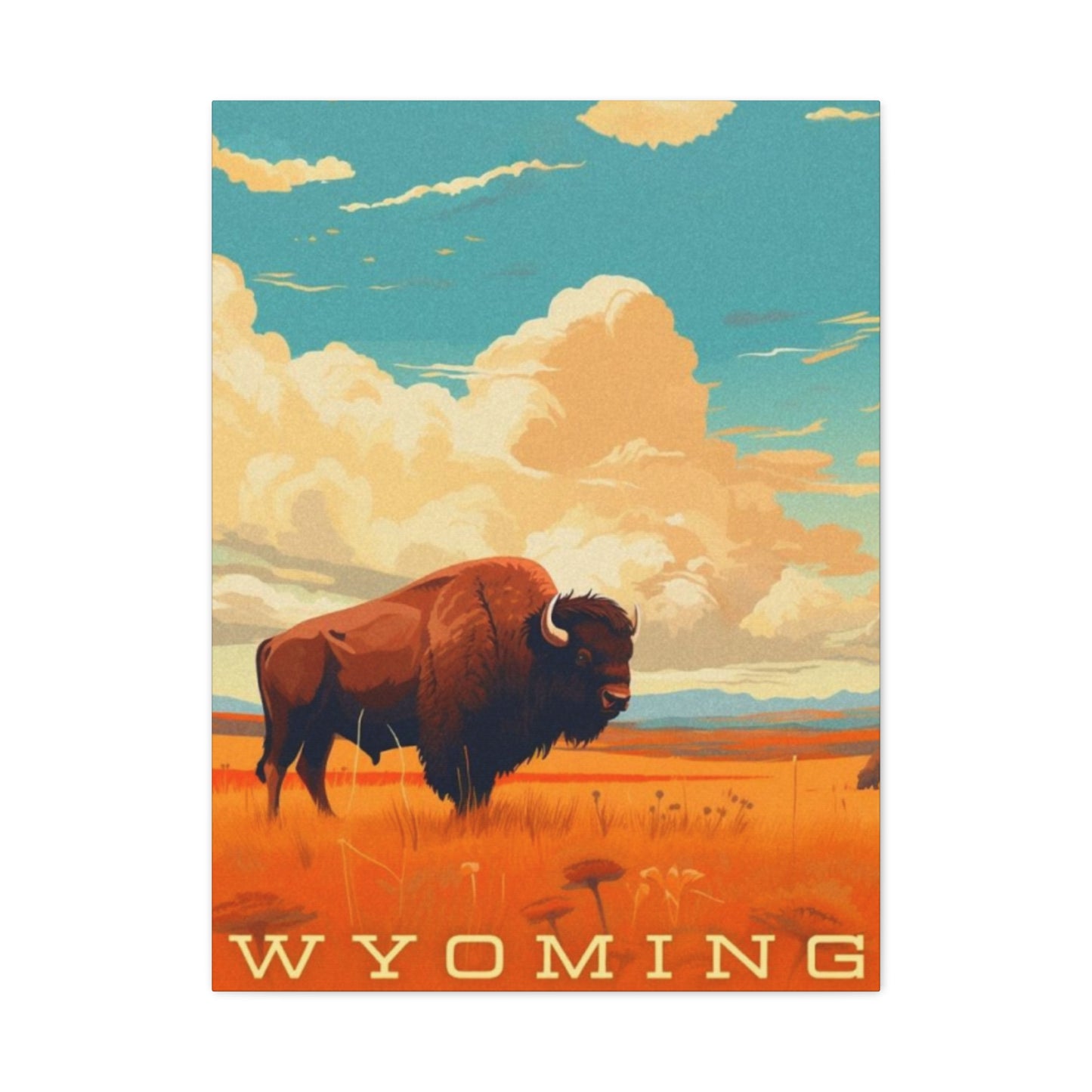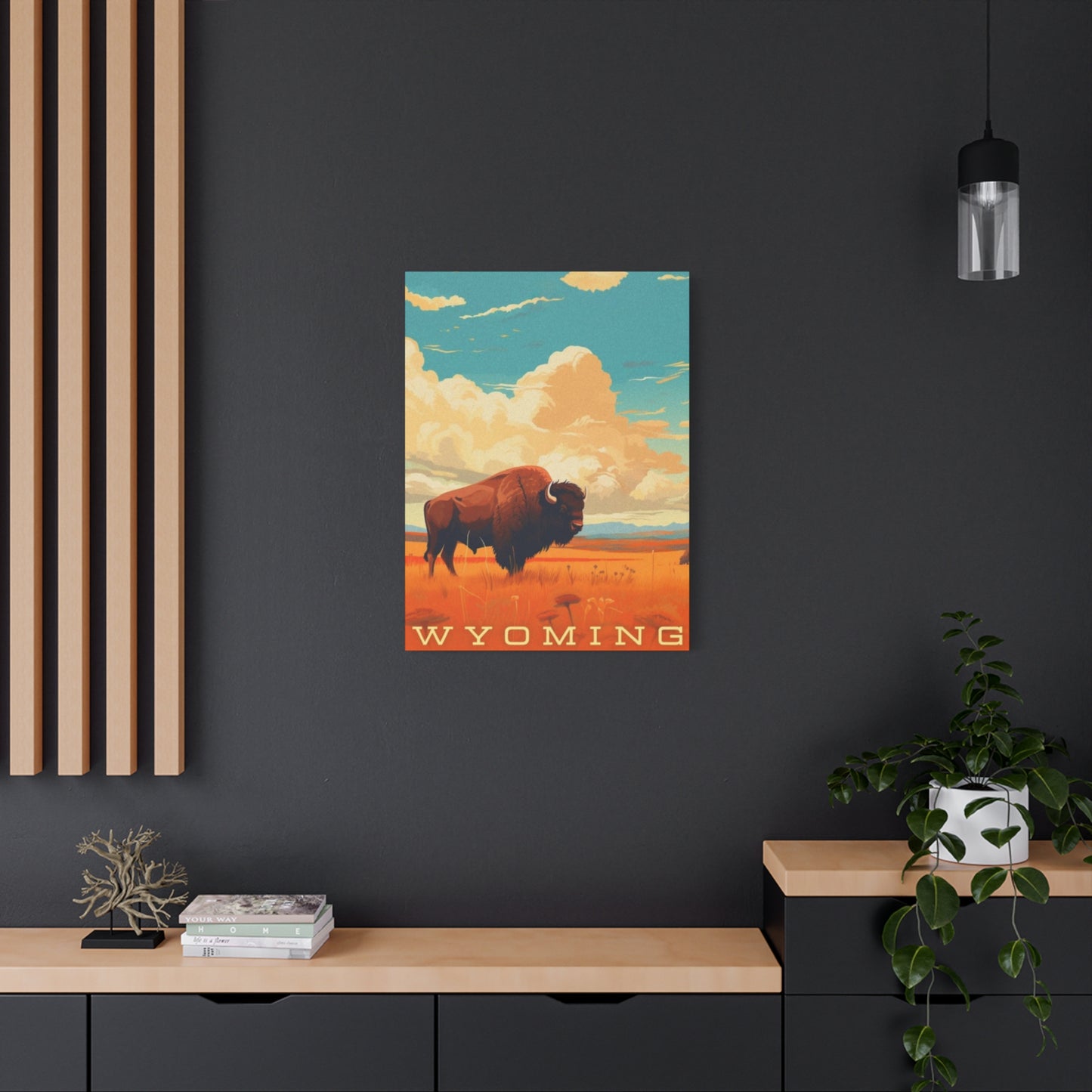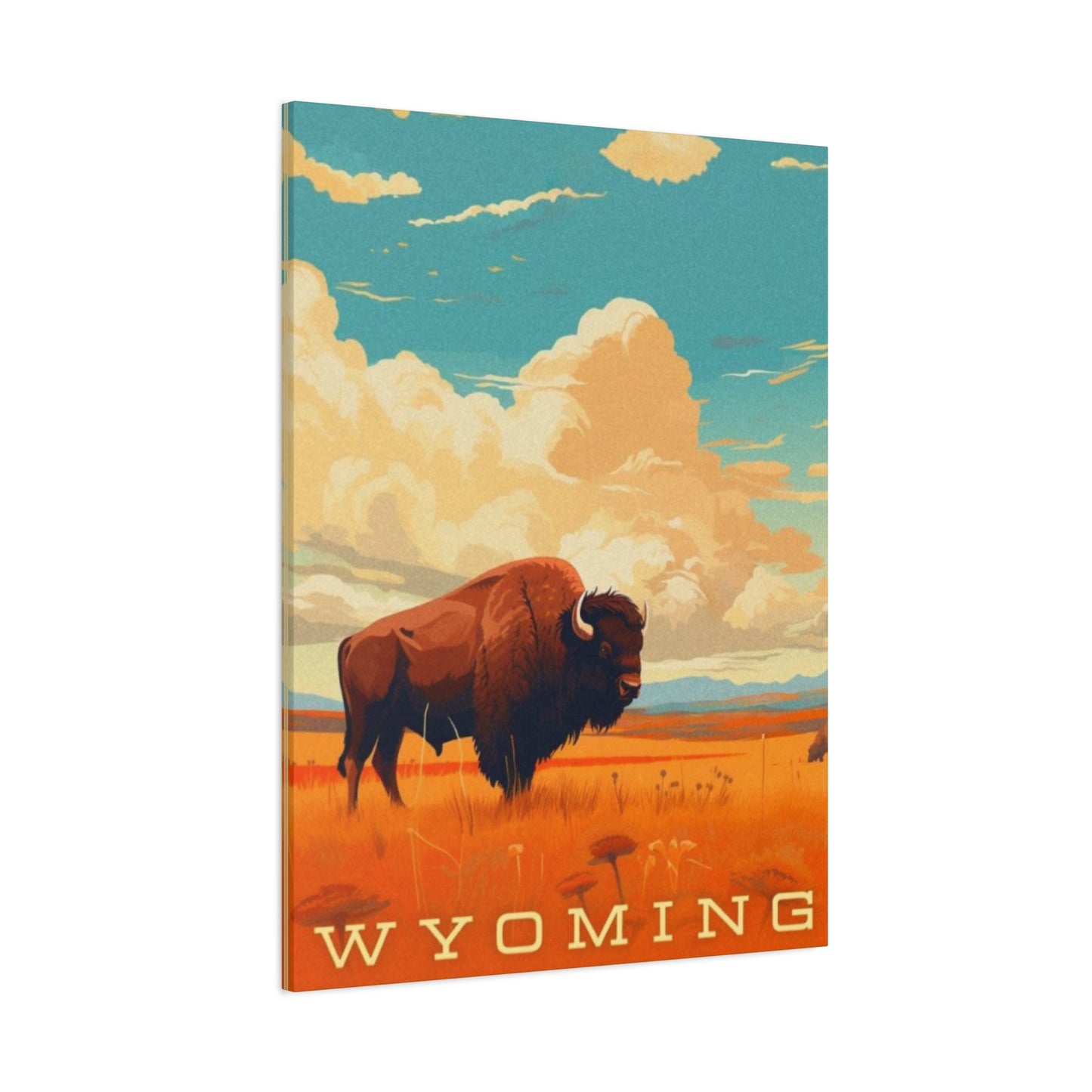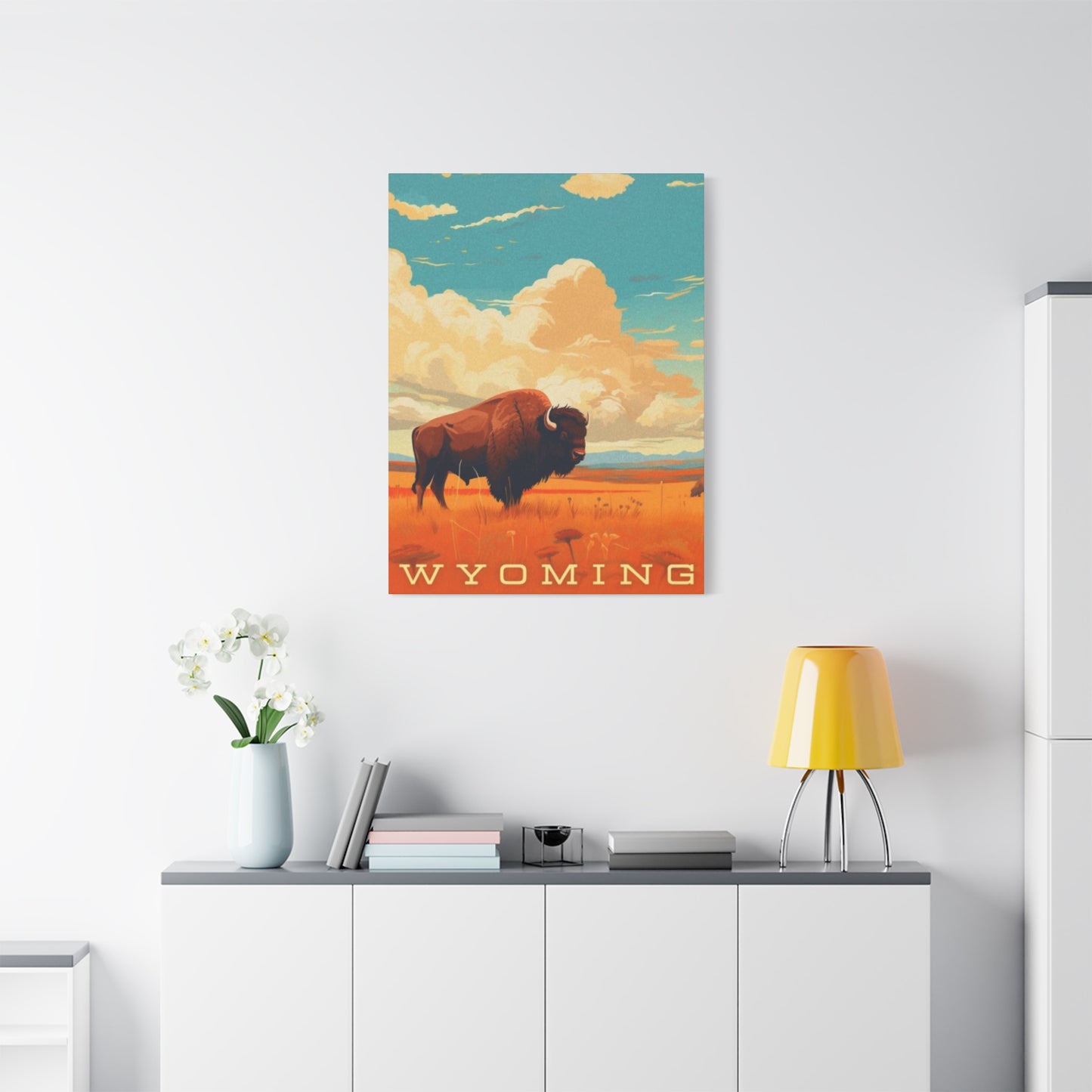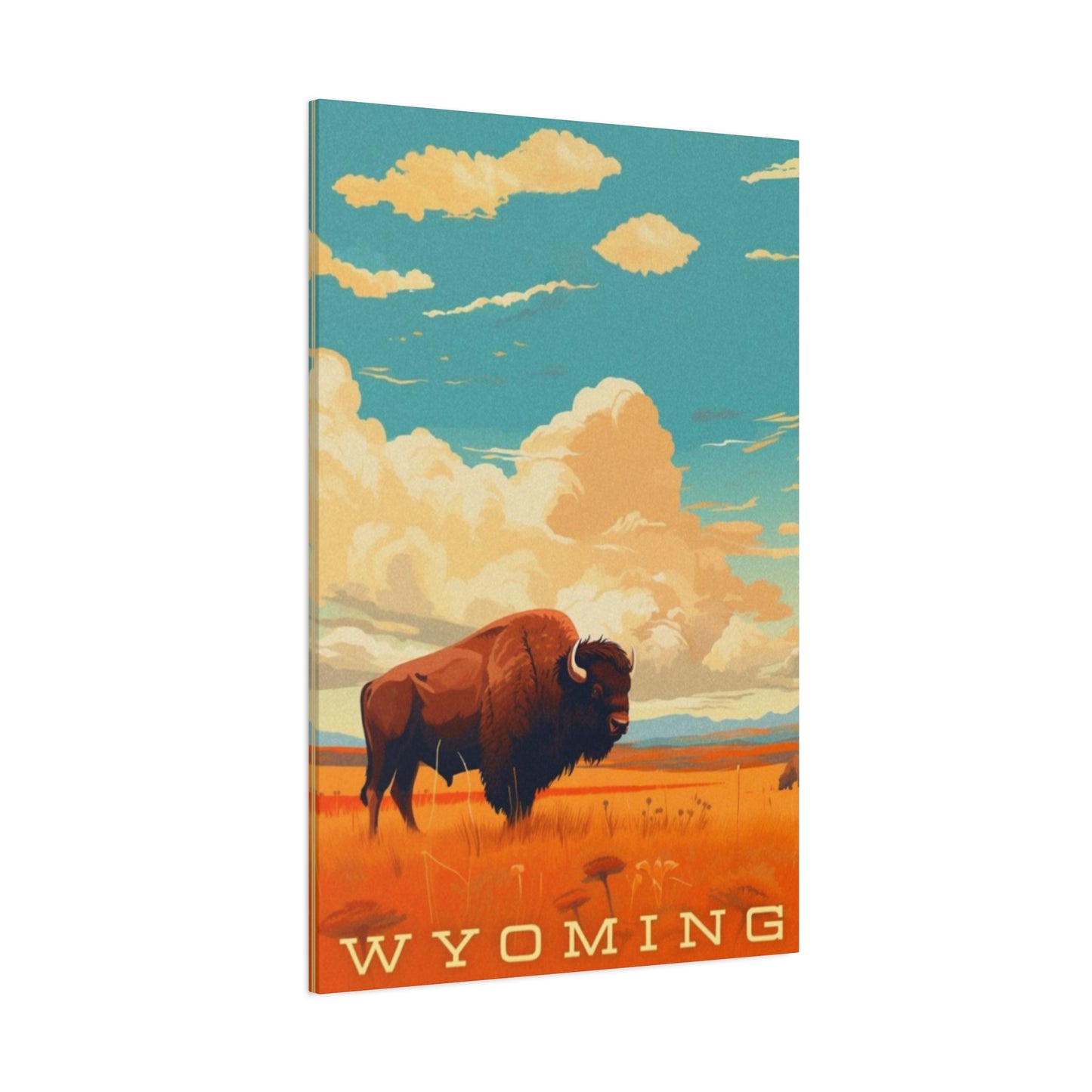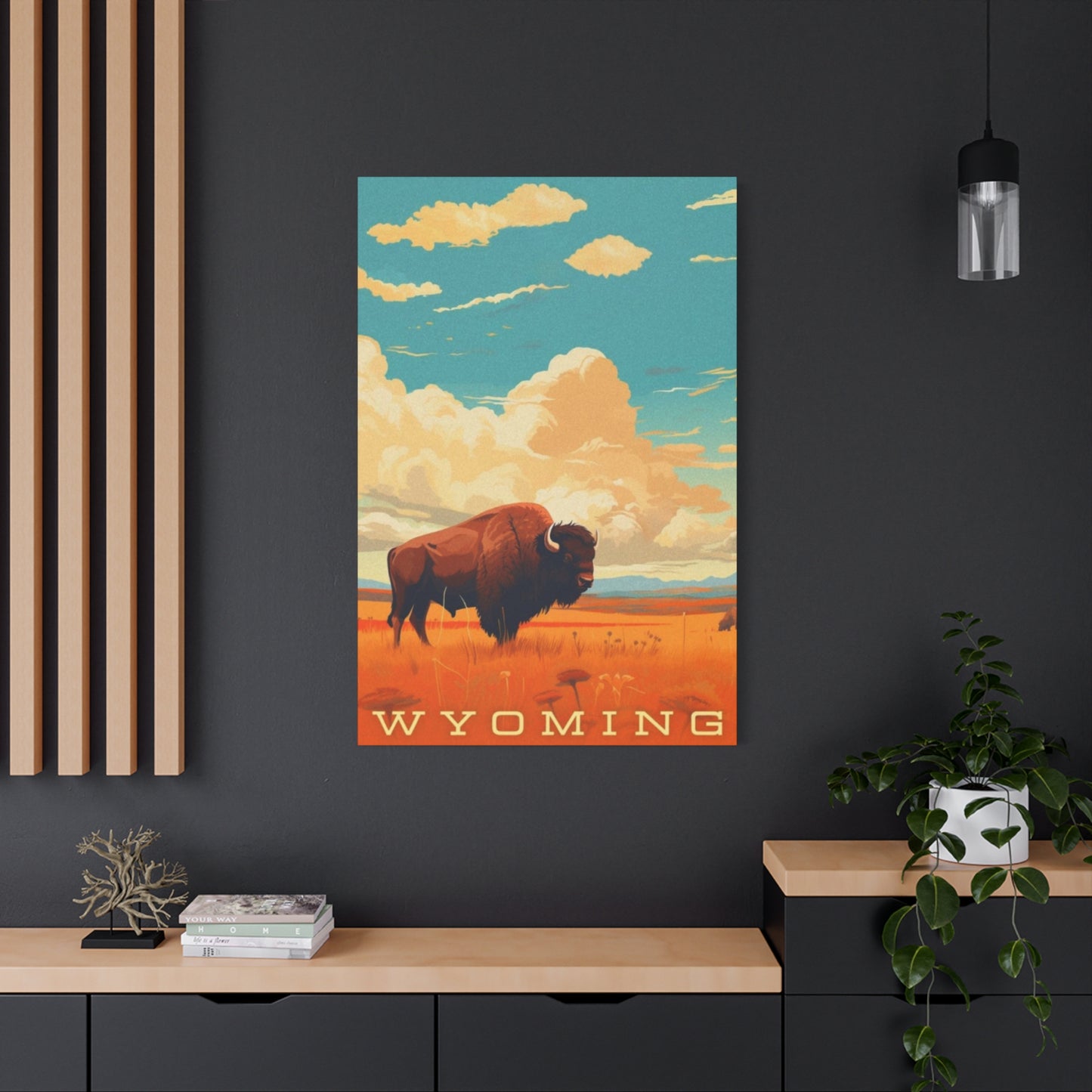Wyoming National Park Wall art: Celebrating Nature's Masterpiece Through Artistic Expression
Wyoming stands as one of America's most breathtaking destinations, home to some of the most spectacular natural landscapes on the planet. The state's national parks showcase nature at its most powerful and serene, offering endless inspiration for artists and nature enthusiasts alike. When these magnificent vistas are transformed into wall art, they bring the essence of wilderness into homes and spaces, creating connections between indoor environments and the untamed beauty of the American West. This exploration delves into how the grandeur of Wyoming's protected landscapes has been immortalized through various artistic mediums, offering collectors and admirers ways to celebrate these natural treasures within their own living spaces.
Capturing the Majesty of Wyoming National Parks in Wall Art
The process of translating Wyoming's vast natural landscapes into wall art requires both technical skill and deep appreciation for the environment. Artists who undertake this challenge must first immerse themselves in the landscapes they wish to portray, understanding the interplay of light across mountain peaks, the subtle color variations in geothermal features, and the dynamic weather patterns that sweep across open valleys. Photography serves as one primary method, with professionals spending countless hours waiting for perfect lighting conditions that reveal the true character of locations like Old Faithful or the Snake River Overlook. The golden hour brings warm tones that soften rugged terrain, while stormy skies add drama and intensity to already powerful compositions.
Painters approach these subjects with different considerations, choosing between realistic representation and interpretive expression. Oil paintings allow for rich texture and depth, particularly effective when depicting the layered rock formations of canyons or the dense forests that blanket lower elevations. Watercolors capture the ethereal quality of morning mist rising from thermal features or the delicate wildflowers that carpet alpine meadows during brief summer blooms. Each medium offers unique advantages for expressing different aspects of Wyoming's natural character, and artists often select their approach based on which qualities they most wish to emphasize.
Digital artists have expanded the possibilities for creating wall art inspired by these landscapes, using technology to enhance colors, adjust compositions, and create pieces that blend photographic realism with artistic interpretation. This approach allows for experimentation with scale and perspective, sometimes combining multiple viewpoints or seasonal variations into single compositions that capture the essence of a location rather than a specific moment. The resulting pieces often have a contemporary feel that appeals to modern interior design sensibilities while maintaining strong connections to the natural subjects that inspired them.
The market for such artwork has grown substantially as more people seek ways to bring natural beauty into urban and suburban environments. Collectors range from those with personal connections to Wyoming through visits or residence, to those who simply appreciate the aesthetic qualities of mountain landscapes and geothermal wonders. Interior designers frequently incorporate these pieces into both residential and commercial spaces, recognizing how images of natural environments can create calming atmospheres and serve as focal points that anchor room designs.
Exploring Wyoming's Natural Beauty Through Wall Art
Wyoming's diverse ecosystems present artists with an extraordinary range of subjects, from the volcanic landscapes of the northwestern corner to the high desert environments of the south. Each ecological zone possesses distinct visual characteristics that translate differently into artistic media. The alpine environments feature dramatic vertical relief, with jagged peaks creating bold skylines against expansive western skies. These mountain scenes work particularly well in large-format prints and paintings where scale can be properly represented, allowing viewers to experience some of the awe that comes from standing before these geological giants.
Lower elevation areas offer different artistic opportunities, with sagebrush plains stretching to distant horizons and riparian zones creating ribbons of green through otherwise arid landscapes. These settings provide studies in subtlety, with muted earth tones and soft textures that contrast sharply with the bold statements of mountain ranges. Artists working with these subjects often focus on the quality of light and the sense of space, capturing the feeling of isolation and openness that characterizes much of Wyoming's backcountry. Such pieces resonate with viewers seeking minimalist aesthetics or contemplative imagery that encourages quiet reflection.
Wildlife adds another dimension to artistic interpretations of Wyoming's natural areas. Bison herds moving across valleys, elk silhouetted against snowy backgrounds, and bears foraging in meadows provide dynamic subjects that bring life and narrative to landscape compositions. Some artists specialize in wildlife imagery, creating detailed studies that highlight individual animals, while others incorporate fauna as elements within broader landscape scenes, showing the interconnection between creatures and their habitats. These animal-focused pieces appeal particularly to collectors interested in conservation and natural history.
Seasonal variations multiply the artistic possibilities exponentially. Winter transforms familiar landscapes into studies in white and blue, with snow-covered peaks and frozen waterfalls creating entirely different visual experiences than summer's lush greens and abundant wildflowers. Autumn brings golden aspens that glow against evergreen forests, while spring showcases the dramatic contrast between lingering snow and emerging vegetation. Artists who create series depicting the same locations across seasons allow collectors to rotate their displays, keeping spaces fresh while maintaining thematic consistency.
The Wild Landscape of Wyoming National Parks in Art
The untamed character of Wyoming's protected areas presents both inspiration and challenge for artists seeking to capture their essence. Unlike manicured gardens or urban landscapes with clear human organization, wilderness areas possess organic complexity that defies simple representation. Compositions must balance multiple elements—foreground details, middle-ground features, and distant horizons—while maintaining coherence and visual interest. Successful pieces guide viewers' eyes through scenes in ways that mirror the experience of exploring these environments in person, creating journeys within static images.
Geothermal features unique to certain areas of Wyoming offer particularly distinctive subject matter. The vibrant colors of hot springs, created by thermophilic bacteria, range from deep oranges and reds to brilliant yellows and greens, providing natural color palettes unlike anything found in typical landscapes. Steam rising from thermal features adds movement and atmosphere, creating scenes that seem alive even in still images. Artists working with these subjects must balance the fantastic colors and formations with compositional elements that prevent scenes from appearing surreal or artificial, despite their genuinely extraordinary nature.
Canyon systems carved by ancient rivers reveal millions of years of geological history in their layered walls, presenting opportunities for artists to explore themes of time and natural processes. The play of shadows in deep gorges creates dramatic lighting conditions that change throughout the day, offering endless variation for photographers and painters. These vertical landscapes contrast with the horizontal emphasis of plains and valleys, providing different emotional tones—where open landscapes suggest freedom and possibility, canyons evoke ancient mysteries and the slow power of natural forces.
River systems threading through wilderness areas create both visual interest and thematic resonance, representing movement and life within otherwise static landscapes. Artists capture rivers in various states—placid and reflective, tumbling over rocks, or frozen in winter—each condition suggesting different moods and metaphorical meanings. Reflections in calm water allow for compositionally interesting inversions and symmetries, while rapids and waterfalls demonstrate nature's kinetic energy. These water features also provide focal points that draw attention and anchor compositions, serving both aesthetic and practical purposes in artwork design.
Wyoming's Untamed Wilderness: A Wall Art Journey
Creating meaningful wall art from wilderness subjects requires more than technical proficiency with cameras or paintbrushes. Artists must develop deep familiarity with their subjects, understanding not just how places look but how they feel, sound, and change. Many artists specializing in Wyoming landscapes spend weeks or months in the field, camping in remote areas and hiking countless miles to reach viewpoints that capture the essence of wilderness character. This immersion informs their work with authenticity that resonates with viewers, particularly those who have experienced these places firsthand.
The concept of wilderness itself carries cultural and philosophical weight that thoughtful artists incorporate into their work. These are places where human impact remains minimal, where natural processes continue largely uninterrupted, and where visitors experience themselves as guests in spaces that belong fundamentally to other species and natural forces. Artwork that successfully conveys this quality does more than depict pretty scenery—it communicates something essential about the relationship between humanity and the natural world, reminding viewers of realities beyond human construction and control.
Scale presents a particular challenge when translating wilderness experiences into wall art. Standing before a mountain range, viewers perceive vast distances and enormous masses that create specific psychological impacts. Reducing these scenes to sizes suitable for hanging on walls necessarily diminishes their physical presence, yet skilled artists find ways to preserve their emotional impact through careful composition, strategic use of perspective, and thoughtful consideration of how pieces will be displayed. Large-format prints and paintings help maintain some sense of scale, particularly when displayed prominently where they can be viewed from appropriate distances.
The journey aspect of experiencing wilderness—the physical effort required to reach remote locations, the gradual revelation of vistas as trails climb toward viewpoints, the accumulation of smaller beauties encountered along the way—can be suggested through artistic choices even in single images. Artists might include trail elements in foregrounds, use lighting that suggests specific times of day when hikers typically reach certain locations, or create series that represent progression through landscapes. These approaches help artwork function not just as decoration but as reminders of experiences and invitations to future adventures.
The Serenity of Wyoming's National Parks in Modern Art
Contemporary artistic approaches to natural subjects often differ significantly from traditional landscape painting conventions. Modern artists feel free to abstract, simplify, or reimagine their subjects, creating pieces that capture emotional essences rather than photographic accuracy. This approach works particularly well with serene subjects—quiet lakes, still forests, empty valleys—where the feeling of peace is more important than specific details. Minimalist compositions with limited color palettes can evoke tranquility as effectively as or more powerfully than busy, detailed renderings.
Abstract interpretations of Wyoming landscapes allow artists to emphasize particular qualities like color, texture, or form while releasing themselves from representational accuracy. A painting might capture the essence of a mountain range through simplified geometric shapes that suggest peaks without depicting specific summits. Another might focus entirely on the color relationships found in a hot spring, creating compositions of flowing hues that reference their natural source while existing as pure color studies. These approaches appeal to collectors seeking artwork that coordinates with contemporary interior design while maintaining connections to natural inspiration.
Mixed media pieces combine various materials and techniques, perhaps incorporating actual elements from landscapes—pressed flowers, small stones, or fragments of wood—into pieces that also include painted or printed components. This approach creates textural interest and physical depth while strengthening the connection between artwork and source material. Such pieces often have artisanal qualities that distinguish them from mass-produced prints, appealing to collectors who value craftsmanship and uniqueness.
Installation and presentation choices significantly impact how modern interpretations of natural subjects function within spaces. Frameless mounting, floating frames, or gallery wraps that eliminate visible borders help artwork feel more integrated with walls, reducing barriers between image and viewer. Large-scale pieces or multi-panel installations create immersive experiences, surrounding viewers with imagery in ways that single modest pieces cannot. Lighting design, including both ambient room lighting and dedicated picture lights, dramatically affects how colors appear and how much attention pieces command within spaces.
National Parks of Wyoming: Nature's Palette on Canvas
The color palette available in Wyoming's protected areas spans from subtle earth tones to impossibly vibrant hues that seem artificial until witnessed firsthand. Artists working with these subjects must make decisions about color fidelity—whether to represent scenes exactly as cameras capture them or to adjust hues to match human perception, which differs from photographic recording. Eyes adapt to lighting conditions in ways that cameras do not, and memory often enhances certain colors while diminishing others. The question of what constitutes authentic representation becomes complex when dealing with subjects that include genuinely unusual colors.
Seasonal color shifts provide dramatically different palettes throughout the year. Summer offers the full spectrum of greens in vegetation, from pale sage to deep pine, along with the multicolored displays of wildflowers that transform meadows into living tapestries. Autumn concentrates yellows and golds in aspen groves, creating bright accents against darker evergreens and establishing warm color schemes. Winter reduces most landscapes to whites, blues, and grays, occasionally accented by exposed rock faces or the dark forms of animals and trees. Spring brings the fresh greens of new growth along with lingering snow, creating distinctive combinations of seasons in transition.
Time of day profoundly affects available colors and their relationships. Dawn and dusk provide warm, saturated light that intensifies colors and creates long shadows with rich, cool tones. Midday sun offers bright, even illumination that reveals details but can flatten scenes by reducing contrast. Overcast conditions diffuse light, softening colors and creating moody atmospheres entirely different from bright sunshine. Storm light, particularly the golden illumination that sometimes breaks through clouds, creates dramatic effects that artists prize for their emotional impact and visual interest.
Artists' personal color preferences and the intended uses of artwork also influence color decisions. Pieces designed for specific interior spaces might be adjusted to coordinate with existing color schemes, while artists creating for gallery exhibition might push colors toward more dramatic or unusual combinations. Some artists are known for signature color approaches—consistently warmer or cooler than reality, slightly heightened in saturation, or skewed toward particular portions of the spectrum. These stylistic choices help establish recognizable artistic voices while offering collectors diverse interpretive options for similar subjects.
From Teton to Yellowstone: Wyoming National Parks in Wall Art
The most iconic protected areas in Wyoming each possess distinctive visual identities that artists have explored extensively. The sharp peaks and glacial valleys of the Teton range create compositions of bold verticality, with jagged skylines providing dramatic profiles that work well in both color and black-and-white treatments. The relative youth of these mountains means they retain crisp edges and clear definition, unlike older ranges worn smooth by erosion. Artists often pair these peaks with foreground elements—wildflowers, old barns, or reflective lakes—that provide scale and context while adding narrative layers to compositions.
Yellowstone's geothermal features offer completely different aesthetic opportunities, with their otherworldly colors and bizarre formations. The Grand Prismatic Spring alone has inspired countless artistic interpretations, its rainbow of colors and perfect circular form creating ready-made compositions that nonetheless challenge artists to represent faithfully. Travertine terraces, with their flowing mineral deposits creating sculptures that resemble frozen waterfalls, provide textural studies unlike anything else in nature. Geysers caught mid-eruption become studies in energy and motion, freezing explosive moments that last only seconds.
The wildlife populations of these areas add another dimension to artistic representations. Bison and elk, present in large herds, provide opportunities for both intimate portraits and sweeping scenes of animals moving across landscapes. Predators like wolves and bears, though less frequently seen, carry cultural significance that makes their representations particularly powerful. Bird species, from trumpeter swans to bald eagles, offer dynamic subjects for artists interested in combining landscape and wildlife elements.
Lesser-known areas within these parks and in other protected sites across Wyoming provide material for artists seeking to move beyond the most photographed locations. Hidden waterfalls, remote valleys, and quiet corners of better-known areas offer fresh perspectives and the appeal of discovery. Collectors interested in unique pieces often gravitate toward these less familiar subjects, appreciating both their aesthetic qualities and their relative rarity compared to images of famous landmarks.
How Wyoming's National Parks Inspire Stunning Wall Art
The inspirational impact of experiencing these landscapes firsthand cannot be overstated as a factor in artistic production. Artists who work primarily from photographs versus those who paint or draw on location produce noticeably different results, even when depicting the same subjects. Direct experience provides multisensory input—sounds, smells, temperature, humidity, wind—that informs artistic decisions in subtle but significant ways. The physical experience of being present in landscapes also creates emotional connections that manifest in artwork, giving pieces depth that transcends mere visual accuracy.
Many artists describe their relationships with Wyoming's natural areas in spiritual or philosophical terms, speaking of landscapes as teachers or sources of renewal. This reverence appears in their work as care and attention to detail, as willingness to return repeatedly to the same locations under different conditions, and as respect for subjects that manifests as thoughtful representation. Viewers often sense this attitude in finished pieces, responding to artwork created with genuine appreciation differently than they respond to images produced purely as commercial products.
The creative process itself varies widely among artists. Some work primarily from memory and impression, allowing time and distance from direct experience to distill scenes to their essential qualities. Others work from extensive photographic reference, using cameras to capture details that inform studio work. Still others create primarily or entirely in the field, believing that immediacy of response produces more authentic results. Each approach has advocates who can point to successful examples, and the diversity of methods ensures that collectors encounter wide variety in available artwork.
Inspiration extends beyond individual artists to influence broader design trends and aesthetic movements. As environmental awareness grows, imagery celebrating natural areas becomes increasingly popular in both residential and commercial contexts. Hotels, restaurants, and offices incorporate such artwork to create specific atmospheres, while homeowners use nature imagery to establish calming retreats from urban stress. This growing market encourages more artists to focus on natural subjects, creating positive feedback loops that increase both the quantity and quality of available work.
Bringing the Outdoors In: Wyoming National Parks in Art
The desire to maintain connections with natural environments even while spending most time indoors drives much of the market for nature-inspired wall art. Urban and suburban dwellers, particularly those who enjoy outdoor recreation, use imagery of mountains, forests, and wildlife to personalize spaces and maintain psychological links to experiences and values they find meaningful. Studies have shown that views of nature, even through windows or in images, provide measurable psychological benefits including stress reduction and improved mood. Well-chosen wall art serves not just decorative functions but contributes to healthier, more pleasant living environments.
The scale and placement of artwork significantly affect its impact within spaces. A single large piece above a sofa or bed creates a focal point that dominates a room, making a strong statement about priorities and aesthetics. Galleries of smaller pieces allow for more complex narratives, perhaps showing different locations, seasons, or perspectives on similar themes. Placement relative to furniture and in relation to natural light sources requires careful consideration to ensure pieces can be properly appreciated while serving their intended spatial functions.
Coordinating artwork with existing interior design requires balancing multiple factors including color schemes, stylistic consistency, and thematic appropriateness. A rustic cabin interior naturally accommodates traditional landscape paintings and wildlife imagery, while a minimalist urban loft might be better suited to abstract interpretations or stark black-and-white photography. Some collectors build entire rooms around significant pieces, selecting furniture, colors, and accessories to complement chosen artwork. Others prefer artwork to blend more subtly with existing design, serving as accents rather than centerpieces.
The emotional tones of different artistic interpretations suit different spaces and purposes. Dramatic, high-contrast images of storms or rugged terrain might work well in offices or studies where they convey strength and determination. Serene scenes of still water or misty forests better suit bedrooms or meditation spaces where calm is desired. Bright, colorful pieces energize spaces and work well in social areas, while subdued, monochromatic works create sophistication suitable for formal settings. Thoughtful selection based on both aesthetic preferences and intended psychological effects maximizes artwork's contribution to quality of life.
Wyoming National Parks: A Canvas of Majestic Landscapes
The metaphor of landscape as canvas suggests both the natural beauty of these areas and the creative potential they offer artists. Unlike literal canvases that begin blank, these landscapes arrive with inherent composition, color, and content that artists must interpret rather than invent. This presents both opportunity and constraint—artists work with extraordinarily beautiful raw material but must find personal vision within subjects that countless others have also explored. The challenge becomes not depicting landscapes but discovering what specific aspects of those landscapes resonate most strongly with individual artistic sensibilities.
The majestic quality of Wyoming's protected areas derives partly from scale and partly from the relative absence of human modification. Mountains rise thousands of feet above valleys, creating vertical relief that impresses through sheer magnitude. Uninterrupted sightlines stretch for dozens of miles, allowing perception of distances difficult to experience in more developed areas. The wildness itself—the knowledge that these are places where nature rather than humanity determines what happens—contributes to their psychological impact in ways that shaped and managed landscapes cannot replicate.
Artists grapple with questions of how much to include or exclude from compositions. A purist approach removes all signs of human presence, creating images of pristine wilderness that emphasize natural processes and forms. A more inclusive approach acknowledges that humans are part of these landscapes as visitors and stewards, perhaps including trails, viewing platforms, or small human figures that provide scale while indicating the accessibility of experiences depicted. Each choice reflects different philosophical stances on the relationship between humanity and nature.
The enduring appeal of landscape as artistic subject suggests deep human needs for connection with natural environments. Evolutionary psychologists propose that humans possess innate responses to certain landscape types, particularly those that would have provided resources and security for ancestral populations. Open views suggesting safe vantage points, water sources, and vegetation all appear repeatedly in preferred landscape imagery across cultures. Wyoming's protected areas possess many of these qualities in dramatic form, perhaps explaining their powerful pull on human imagination and their popularity as artistic subjects.
Nature's Grandeur: Wyoming National Parks in Wall Art
Grandeur refers to qualities that inspire awe, admiration, or respect through impressive beauty or scale. Wyoming's natural areas achieve grandeur through multiple means, each translating differently into artistic media. Physical scale—the size of mountains, the expanse of valleys, the height of waterfalls—creates immediate visceral impact when experienced directly but poses challenges for artists working in constrained formats. Techniques for suggesting scale include including recognizable objects for size comparison, using aerial perspectives that reveal extent, and employing compositional strategies that lead eyes through multiple depth planes.
Temporal grandeur—the sense of deep time visible in geological formations—offers different opportunities for artistic interpretation. Layered rock faces displaying millions of years of sediment deposition, ancient volcanic features, and glacially carved valleys all speak to timeframes beyond normal human comprehension. Artists might emphasize these qualities through stark, almost abstract compositions that focus on patterns and textures, or through more narrative approaches that contrast ephemeral elements like weather or vegetation with enduring stone. This temporal perspective invites philosophical reflection on human existence within larger natural contexts.
The grandeur of natural processes—weather systems sweeping across open landscapes, seasonal transformations, the patient work of water carving stone—provides dynamic subjects that contrast with static mountain scenery. Capturing these processes requires either patience to witness dramatic moments or imagination to suggest ongoing change within still images. Storm clouds, moving water, wind-bent vegetation, and other indicators of natural forces in action add energy and movement to compositions that might otherwise feel frozen or dead.
Cultural grandeur attaches to these landscapes through their historical significance and their status as nationally protected treasures. Wyoming's parks attract millions of visitors annually, many of whom form powerful memories associated with specific places. Artwork depicting these locations carries resonance beyond pure aesthetic appeal, connecting to personal histories and cultural narratives about American natural heritage. This layer of meaning enhances artwork's significance for collectors, particularly those with personal connections to depicted places.
The Spirit of Wyoming's National Parks Through Art
Spirit, understood as essential character or animating force, suggests qualities beyond physical appearance. Artists attempting to capture the spirit of places must look beyond obvious beauty to deeper characteristics that define locations. Is a particular valley primarily about peace and serenity, or does it convey strength and endurance? Does a mountain inspire awe through its beauty or through its indifference to human presence? These interpretive decisions shape how artists approach their subjects and what elements they choose to emphasize or minimize.
Indigenous peoples who inhabited these areas for thousands of years before European contact understood them in spiritual and cultural contexts very different from contemporary recreational and aesthetic perspectives. While non-native artists cannot authentically represent indigenous spiritual relationships to these lands, awareness of deeper historical and cultural layers can inform more thoughtful and respectful artistic approaches. Some artists collaborate with tribal members or incorporate traditional perspectives in their work, seeking to acknowledge complex histories associated with places now managed as national parks.
Weather and light serve as primary tools for conveying spirit in landscape artwork. Harsh storm light suggests wildness and power, while soft dawn illumination evokes peace and possibility. Fog obscuring portions of scenes creates mystery, while crystal-clear atmosphere suggests honesty and transparency. Artists manipulate these elements to guide viewer responses, using technical means to shape emotional experiences of their work. The same location photographed under different conditions produces vastly different impressions, demonstrating how much interpretation influences ostensibly objective representation.
Personal artistic vision ultimately determines how spirit manifests in individual pieces. Two artists painting identical scenes will produce different results based on their unique sensibilities, experiences, and technical approaches. This diversity ensures that collectors can find interpretations aligned with their own responses to landscapes, choosing work that resonates with personal understanding of what makes particular places special. The market supports multiple visions, from hyperrealistic representation to loose abstraction, from somber monochrome to saturated color, each approach finding audiences who respond to its particular way of capturing natural spirit.
Timeless Beauty: Wyoming National Parks Captured in Wall Art
Timelessness in landscape art refers to qualities that transcend temporary trends, maintaining appeal across decades or generations. Certain compositional approaches, color palettes, and subjects prove persistently popular regardless of shifting fashions. Classic landscape formats—mountain vistas, reflective lakes, dramatic weather—continue attracting collectors because they address fundamental human responses to natural beauty. Artists creating work intended for lasting relevance often draw from these established traditions while seeking fresh perspectives or personal interpretations that distinguish their work from countless precedents.
Black and white photography of natural subjects possesses particular timeless quality, stripping away the potential distraction of color to focus on form, texture, light, and shadow. This approach works especially well with subjects that possess strong graphic qualities—silhouetted peaks, gnarled trees, flowing water. The historical associations of black and white imagery, connecting contemporary work to photography's earliest days, adds another layer of timelessness, suggesting continuity with long artistic traditions. Many collectors specifically seek monochrome work for its classic aesthetic and its versatility in coordinating with varied interior design schemes.
Traditional painting techniques and materials—oil on canvas, watercolor on paper—carry associations with fine art history that lend gravitas to landscape subjects. While photography and digital art have expanded artistic possibilities, hand-painted work retains special status for many collectors who value craftsmanship and the unique qualities of original pieces. Each painting is singular, bearing evidence of the artist's hand in visible brushwork and slight variations that distinguish it from any reproduction. This uniqueness contributes to timeless appeal, offering collectors something that cannot be perfectly duplicated.
The landscapes themselves possess timeless qualities that informed artistic choices cannot diminish. Mountains stood before humans arrived and will endure long after current civilizations pass. Rivers have flowed their courses for millennia, and forests have grown and regrown through countless cycles. This permanence relative to human timeframes imbues landscape subjects with significance beyond momentary beauty, suggesting continuity and endurance that resonates deeply with viewers aware of their own temporal limitations. Art celebrating these lasting features of the natural world shares in their timelessness, remaining relevant as long as humans respond to natural beauty.
Wyoming National Parks: The Heart of the American West in Art
Wyoming occupies a central position in cultural mythology of the American West, embodying qualities—wildness, open space, rugged individualism—that define regional identity. The state's protected areas preserve landscapes that figure prominently in national imagination, appearing in films, literature, and art that explore what the West means culturally and symbolically. Artists working with Wyoming subjects tap into these broader narratives, whether consciously or not, and their work carries associations beyond the specific places depicted. A painting of the Tetons references not just those particular mountains but an entire complex of cultural meanings attached to western landscapes.
The cowboy heritage of Wyoming adds another layer to artistic interpretations of its landscapes. Though cattle ranching represents only one of many ways humans have related to these environments, it looms large in popular imagination and in marketing of the region. Some artists incorporate ranching elements—old barns, fences, cattle—into their work, blending natural and human history. Others pointedly exclude all human traces, perhaps reacting against romanticized western imagery to present wilder, less culturally mediated visions of these places. Both approaches engage with regional identity, making statements through what they include and exclude.
Tourism has shaped both the landscapes themselves and artistic representations of them. Certain viewpoints become famous through repeated photography, their compositions so familiar they achieve iconic status. Artists face decisions about whether to work with these established views, offering their own interpretations of beloved perspectives, or to deliberately seek less-photographed angles and locations. The former approach offers immediate recognition and connection with viewers' memories, while the latter provides freshness and discovery. Both strategies appear in successful artwork, serving different collector preferences.
The interplay between preservation and use in national parks raises questions relevant to artistic representation. These areas exist simultaneously as ecosystems to be protected and as public resources to be enjoyed. Artists might emphasize pristine wilderness aspects, ecological relationships, or accessibility and human experience. Each emphasis reflects different values regarding the purpose and management of protected areas. Thoughtful artists and collectors understand that their choices about representation participate in broader cultural conversations about environmental stewardship and the appropriate relationship between humanity and nature.
Majestic Mountain Views: Wyoming National Parks in Art
Mountain landscapes dominate Wyoming's most famous protected areas, and their artistic representation draws from long traditions of mountain painting and photography. The physical and metaphorical heights of peaks suggest aspiration, achievement, and transcendence—mountains as challenges to be overcome or as spiritual spaces elevated above ordinary life. Artists working with mountain subjects access these symbolic dimensions whether or not they consciously intend them, as viewers bring cultural associations to their interpretation of imagery. The enduring popularity of mountain art across cultures suggests these associations possess widespread resonance.
Technical challenges of representing mountains include depicting their three-dimensional form on flat surfaces, suggesting their mass and solidity, and conveying their height. Atmospheric perspective—the tendency of distant objects to appear lighter and bluer—helps establish depth, with progressively paler mountain ridges receding toward horizons. Snow patterns often reveal contours and emphasize terrain features, creating natural highlights that add visual interest while describing form. Lighting angles dramatically affect how mountains appear, with side lighting revealing texture through shadows while front lighting can flatten forms.
Foreground elements play crucial roles in mountain compositions, providing scale, adding color and detail, and creating depth through contrast between near and distant features. Alpine wildflowers, gnarled trees, rocky outcrops, or water features in foregrounds give viewers' eyes places to rest while establishing spatial relationships that help make sense of backgrounds. The relationship between foreground and background—whether complementary or contrasting in color, texture, or mood—significantly affects overall composition success. Strong foregrounds prevent pieces from feeling empty or dull despite impressive background features.
Seasonal variation transforms mountain subjects dramatically. Winter's snow cover can completely alter apparent forms, smoothing contours and creating monochromatic studies in white and blue. Spring brings dramatic contrasts between snowmelt and emerging vegetation, with remnant snowfields creating graphic patterns against newly green meadows. Summer offers maximum color variety but can present challenges of busy, overly complex scenes requiring careful compositional management. Autumn provides natural color harmony with golden vegetation complementing the warm tones of rock and the cool blues of distance. Artists often develop preferences for particular seasons based on their aesthetic priorities and the moods they wish to evoke.
Yellowstone and Grand Teton: Icons of Wyoming in Wall Art
These two adjacent protected areas represent crown jewels of American national parks, each offering distinctive subjects that have inspired enormous bodies of artistic work. Yellowstone's fame rests partly on its status as the world's first national park, established in 1872, and partly on its extraordinary geothermal features found nowhere else in such concentration and variety. Artists depicting Yellowstone often focus on these unique elements—geysers, hot springs, mud pots, and travertine terraces—creating works unlike landscape art from any other region. The surreal colors and bizarre formations challenge viewers' expectations of natural appearance, sometimes seeming more suitable to science fiction than realistic landscape representation.
Grand Teton, though less geologically unusual than Yellowstone, presents arguably more classically beautiful mountain scenery. The abrupt rise of the Teton range from the valley floor, without foothills to diminish their impact, creates dramatic vertical relief that has made these peaks among the most photographed mountains in North America. The Snake River winding through foreground valleys, historic barns providing compositional elements and human interest, and pristine lakes reflecting peak images all contribute to iconic compositions that appear repeatedly in various artistic interpretations. Artists working with these familiar subjects must find ways to offer fresh perspectives while acknowledging the visual power that made these views famous.
Wildlife viewing opportunities in both parks add another dimension to artistic possibilities. Yellowstone's bison, elk, and wolf populations attract photographers and painters interested in animal subjects, while Grand Teton's moose, bears, and birds provide similar opportunities. Some artists specialize in combining landscape and wildlife elements, creating pieces that show animals within context of their habitats rather than as isolated portrait subjects. These combined approaches appeal to viewers interested in ecology and natural systems, illustrating relationships between species and environments.
The crowds that visit these famous parks during peak seasons present both challenges and opportunities for artists. Popular viewpoints become congested with tourists, making it difficult to experience or photograph locations in solitude. Some artists embrace this aspect, incorporating human elements into their work to honestly represent contemporary park experience. Others time their visits to off-seasons or work at dawn and dusk when fewer people are present, seeking to capture these places in quieter states. The tension between parks as preserved wilderness and parks as heavily visited tourist destinations remains ongoing, reflected in artistic choices about how to represent these complex landscapes.
Wildlife and Wonders: Wyoming National Parks in Wall Art
Wildlife subjects add life, movement, and narrative interest to landscape compositions. Wyoming's national parks host diverse animal populations including large mammals that make dramatic artistic subjects. Bison, with their massive size and historical significance, appear frequently in artwork celebrating the region. These animals carry cultural weight as symbols of both the wild West and conservation success, having recovered from near-extinction in the late 1800s. Artists depict them in various contexts—grazing peacefully in valleys, moving in herds across plains, or as close-up portraits emphasizing their powerful forms.
Elk represent another iconic species, particularly dramatic during autumn rutting season when bulls bugle and compete for mates. Artists capture bugling bulls wreathed in their own breath on cold mornings, antlers silhouetted against skies, or herds moving through forests. The large antlers of mature bulls provide strong graphic elements that create memorable compositions. Elk also appear in seasonal migration stories, with artwork showing them moving between summer alpine ranges and winter valleys, illustrating natural cycles and ecological relationships.
Predator species including wolves, bears, and mountain lions generate particular interest though they appear less frequently in artwork due to their relative scarcity and elusiveness. Wolves hold special significance in Yellowstone following their controversial reintroduction in the 1990s, and artwork depicting them often carries conservation messages. Bears, both black and grizzly, command respect and attention, their presence suggesting wildness and potential danger that distinguishes truly wild places from tamer landscapes. Artists working with predator subjects must balance accuracy with sensitivity, avoiding anthropomorphization while capturing the power and beauty of these animals.
Bird species offer subjects ranging from eagles and hawks to smaller songbirds and waterfowl. Raptors in flight, particularly against mountain backdrops, create dramatic compositions combining grace with power. Waterfowl on lakes and rivers add life to otherwise static water scenes. Smaller birds perched in characteristic poses or foraging in meadows provide intimate nature studies that balance broader landscape work. The diversity of avian subjects allows artists to explore different scales and compositional approaches while maintaining thematic consistency around Wyoming wildlife.
Celebrating Wyoming's National Parks Through Art
Celebratory art emphasizes beauty, wonder, and positive qualities rather than environmental challenges or degradation. This approach dominates wall art markets where collectors generally seek uplifting imagery for their homes and workplaces. Celebrations of Wyoming's protected areas take many forms, from straightforward beautiful landscape depictions to more conceptual works that explore what makes these places special or worthy of protection. The celebratory impulse connects to gratitude—thanking nature for beauty provided and thanking those who worked to preserve these places for public enjoyment.
Artistic celebrations often highlight specific features that distinguish Wyoming parks from other natural areas. The geothermal features of Yellowstone receive particular attention for their uniqueness and visual drama. The sharp peaks of the Tetons, particularly when reflected in lakes, create instantly recognizable imagery celebrating that specific landscape. Wide-open valleys and big skies characterize many Wyoming scenes, emphasizing the spaciousness and freedom these landscapes embody. Artists selecting what to celebrate make choices about which features best represent places' essential characters.
Seasonal celebrations mark cycles that define life in these environments. Spring greenery and newborn animals suggest renewal and hope. Summer abundance with wildflowers and long days represents peak vitality. Autumn colors and preparing wildlife celebrate harvest and preparation. Winter scenes with snow and survival emphasize strength and endurance. Artists creating seasonal series allow viewers to appreciate how places transform throughout the year while maintaining underlying identity, celebrating both change and continuity.
Conclusion:
Wyoming’s national parks are nothing short of nature’s masterpieces. From the geothermal wonders of Yellowstone to the stunning landscapes of Grand Teton, these parks embody the raw beauty and power of the natural world. As we explore these majestic parks, it becomes clear that art serves as a powerful vehicle to capture and celebrate their essence. Wyoming National Park wall art offers a unique way to connect with the natural world, bridging the gap between the viewer and the wilderness.
Art has long been a reflection of the world around us, and in the case of Wyoming’s national parks, it brings attention to both their grandeur and their vulnerability. By capturing the awe-inspiring vistas, towering mountains, diverse wildlife, and tranquil lakes, wall art provides a permanent tribute to the fleeting moments that define these environments. Artists translate these landscapes into tangible representations, offering viewers a chance to experience the parks' beauty in their own space. For those who have visited, such artwork becomes a reminder of their connection to the parks, while for those who haven’t, it evokes a sense of wonder and curiosity about the natural world.
Moreover, the influence of Wyoming’s national parks on artistic expression cannot be overstated. The diverse natural landscapes, from the jagged peaks of the Tetons to the geothermal features of Yellowstone, have inspired countless artists throughout history. These landscapes are not just backdrops but become active participants in the narrative of the artwork, evoking emotions of serenity, awe, and even contemplation. The combination of raw, untouched nature and the human desire to interpret and communicate that beauty is a fundamental aspect of why Wyoming’s national parks are such an enduring source of artistic inspiration.
The diverse styles in which artists interpret Wyoming’s parks are a testament to the richness of the landscape itself. Some artists prefer the realism of capturing the exact look of the park, showcasing the intricate details of trees, rocks, and wildlife. Others may choose to adopt an abstract approach, distilling the feeling and energy of the landscape into bold, sweeping strokes or vibrant color palettes. Regardless of the style, each piece of wall art offers a unique lens through which to appreciate and interact with the parks.
Additionally, Wyoming’s national parks are more than just scenic destinations; they are critical ecosystems that support a wide variety of plant and animal life. The artwork that celebrates these parks also serves as a reminder of the importance of conservation and environmental stewardship. By adorning our walls with art that depicts these landscapes, we can keep the conversation about preserving these natural wonders alive. The act of showcasing and appreciating art that reflects the parks' beauty serves as a subtle yet impactful way to raise awareness about the ongoing efforts to protect these pristine environments.
In conclusion, Wyoming National Park wall art is a celebration of nature’s grandeur, a tribute to the beauty and significance of these protected spaces, and a powerful means of artistic expression. It connects us to the awe-inspiring landscapes of Yellowstone and Grand Teton, inviting us to reflect on the importance of these parks not only as places of beauty but also as symbols of conservation. Through art, we preserve not just the images of these parks but the spirit of the land itself, inspiring generations to come to appreciate, protect, and celebrate the wonders of Wyoming’s national parks.

















